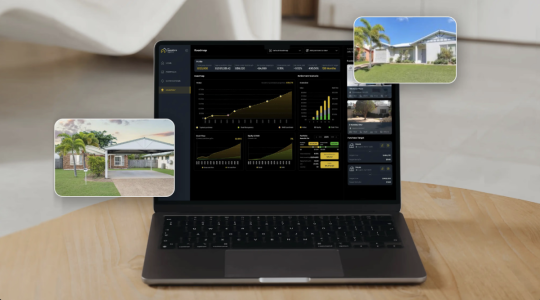Are You Missing Out on These SMSF Property Secrets That Could Transform Your Retirement?
- Replies 0
If you’re like many Aussies dreaming of a richer, more secure retirement, you’ve probably heard whispers about Self-Managed Super Funds (SMSFs) and their potential to supercharge your nest egg. But did you know that SMSFs can be a gateway to direct property investment*, offering a level of control, flexibility, and tax efficiency that traditional super funds simply can’t match? If you’re not already exploring this strategy, you could be missing out on one of the most powerful wealth-building tools available to Australians over 60.Let’s pull back the curtain on the SMSF property secrets that could transform your retirement*—and help you take charge of your financial future.
Why SMSF Property Investment Is Gaining Momentum
For decades, property has been the backbone of Australian wealth creation. Combine that with the tax-advantaged environment of superannuation, and you’ve got a perfect pairing for your golden years.
According to Darren Venter, CEO of The Investors Agency* and a leading voice in the property investing industry, 'SMSFs offer a level of control and choice that traditional super funds simply can’t match. When integrated correctly, direct property investment within an SMSF becomes an incredibly powerful tool for building substantial long-term wealth, all while capitalising on significant tax benefits.'
So, what’s driving the surge in SMSF property investment?
In today’s uncertain world—rising living costs, global market jitters, and unpredictable share markets—property stands out as a stable, tangible asset. And when you invest through your SMSF, you’re not just building wealth for yourself; you’re doing it in a way that’s protected from the ups and downs of the broader economy.
The Tax Advantages: More Money in Your Pocket
Here’s where things get really interesting. The tax treatment of property inside an SMSF is one of the best-kept secrets in Australian retirement planning:
- Rental income* is taxed at just 15% during the accumulation phase (compared to your marginal tax rate outside super).
- Capital gains* on properties held for more than 12 months are taxed at only 10% in the accumulation phase.
- In retirement (pension phase)*, both rental income and capital gains can be completely tax-free! That means more of your hard-earned money stays in your pocket, compounding year after year, and less goes to the taxman. For patient investors, this can make a massive difference to your retirement lifestyle.
Strategic Considerations: It’s Not a Free-for-All
Before you rush out and buy a beach house with your super, there are some important rules and strategies to keep in mind:
- Sole Purpose Test: The property must be purchased solely to provide retirement benefits to SMSF members. No living in it yourself, and no renting it to family or friends. The ATO takes this very seriously!
- Liquidity Matters: All expenses—purchase costs, rates, repairs, and more—must be paid by the SMSF. You’ll need enough cash in the fund to cover these, so careful planning is essential.
- Borrowing Rules (LRBAs): SMSFs can borrow to buy property, but only under strict Limited Recourse Borrowing Arrangements. These loans are more complex than regular home loans, and the property itself is the only security the lender can claim if things go wrong.
- No Early Access: You can’t access the equity or profits from the property until you reach retirement age. While this might seem restrictive, it actually helps your wealth grow undisturbed, compounding in a low-tax environment*.
The Power of Patience—and Professional Advice
One of the greatest strengths of SMSF property investment is also its biggest challenge: you need to play the long game. You can’t dip into your SMSF for a quick cash grab (i.e. no redraws or equity access like traditional investment properties), but that’s exactly what makes it so effective for building lasting wealth. Over time, your property’s value can grow, rental income can increase, and when you finally sell in retirement, you could pay zero capital gains tax.
But—and this is a big but—the rules around SMSFs are complex and always changing. That’s why it’s crucial to get professional advice from SMSF specialists*, property analysts, and accountants who understand the ins and outs of superannuation law.
A good adviser will help you:
- Define your retirement goals and work backwards to choose the right property*.
- Ensure your SMSF remains compliant with all ATO regulations*.
- Structure your investments for maximum tax efficiency* and long-term growth.
Is SMSF Property Right for You?
SMSF property investment isn’t for everyone. It requires a hands-on approach, a willingness to learn, and a commitment to long-term planning. But for those who want more control over their retirement savings—and the potential for a much richer retirement—it’s an option well worth considering.
Tips for Getting Started:
1. Educate Yourself: Read up on SMSF rules, property investment strategies, and tax implications. This article by The Investors Agency is a great place to start.*
2. Seek Professional Guidance: Don’t go it alone—get advice from SMSF and property experts*, an SMSF accountant, financial planner, or property strategist.
3. Plan for Liquidity: Make sure your fund can cover all property-related costs.
4. Think Long-Term: Remember, SMSF property is a marathon, not a sprint.
Key Takeaways
- Investing in property through a Self-Managed Super Fund (SMSF) can provide Australians with greater control over their retirement savings and offer attractive tax advantages*, including low or zero tax on rental income and capital gains in retirement.
- SMSFs allow investors to actively participate in their investment decisions, giving them the opportunity to align their property choices directly with their long-term retirement goals amidst uncertain economic conditions.
- Successful SMSF property investment* requires careful planning and strict adherence to rules—like the Sole Purpose Test, adequate fund liquidity, and Limited Recourse Borrowing Arrangement (LRBA) regulations—to ensure compliance and maximise benefits.
- Accessing the benefits of SMSF property investment demands patience, as returns are locked in until retirement, and seeking professional guidance is strongly recommended* to navigate the complex and evolving superannuation landscape.
Have Your Say!
Are you considering SMSF property investment, or do you have experience with it already? What questions or concerns do you have? Share your thoughts, tips, or stories in the comments below—your insights could help fellow members make smarter decisions about their retirement!
And if you found this article helpful, don’t forget to share it with friends and family who might benefit from these SMSF property secrets. Let’s help each other build a richer, more secure retirement—one smart decision at a time!
Curious to read more or get personalised advice? You can get started with ease with The Investors Agency.*
Advice given in this article is general in nature and is not intended to influence readers’ decisions about investing or financial products. Always seek professional advice that takes into account your personal circumstances before making any financial decisions.
*Please note, members, that this is a sponsored article. All content of ours that has an asterisk next to it means we may get a commission when you click on a link—at no cost to you! We do this to assist with the costs of running the SDC. Thank you!








